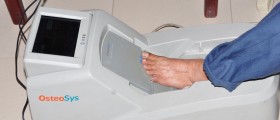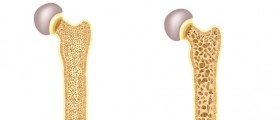
It is not uncommon for people to experience fractures of the foot. As a matter of a fact, these fractures occur quite often and in most cases of foot fractures it is the metatarsal bones which are fractured the most. In most cases of foot fractures, the fractures occur due to a dropping of a heavy object on the foot or by stress connected with abnormal repetitive trauma. If a person’s bones are not strong enough, he or she may experience fractures even from normal stress.
Radiologic anatomy
There are not a big number of people who do not know that metatarsal bones and tarsal bones are connected by strong ligaments. A very important fact that people should be aware of is that the distance between the first and the second metatarsal and the medial and intermediate cuneiform is more than the distance between other corresponding joints. In case when a lateral image is obtained, the line drawn through the long axis of talus bone and the long axis of first metatarsal bone should be straight. However, this is the situation when there is no dislocation.
Simple classification
In most cases of classifications it is the fracture of the fifth metatarsal that they are applied to. When simple classification is considered, there are two classed. The first one are those of tuberosity and the second one are those of the proximal metatarsal within 1.5 cm of the tuberosity. Early fractures, delayed union fractures and nonunion fractures are those that describe acute fractures, Jones fractures and stress fractures.
Torg classification
In cases of Torg classification, people need to know that it is used in cases when the fractures are within 1.5 cm of the metatarsal tuberosity. There are three types of it. Apart from the Torg classification, people should also know that there are Stewart classification and Zonal classification as well.
Acute fractures
There are three types of acute fractures and they are transverse, oblique and comminuted. Most of these fractures are not hard to discover.
Preferred examination
When it comes to metatarsal fractures, in most cases the only type of examination needed is radiography. Apart from acute fractures, dislocations and established stress fractures can be diagnosed as well. Bone scanning is an option as well but it is more sensitive than radiography and it is not a specific investigation. In some cases, even MRI or a CT scan is required. They are both more sensitive than radiography.

















Your thoughts on this
Loading...